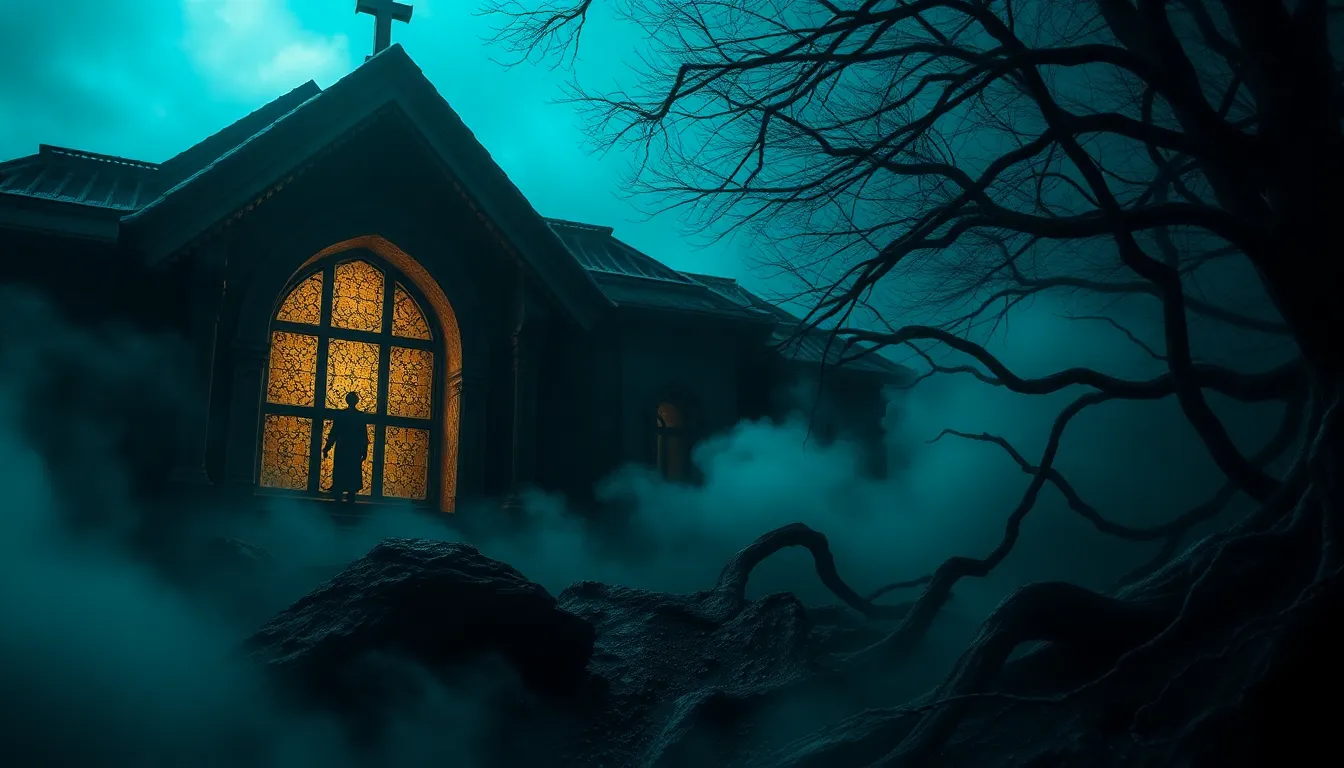The Most Chilling Curses in Literature: What Can They Teach Us?
I. Introduction
Curses have long been a captivating theme in literature, serving as powerful narratives that convey deep emotional and moral lessons. In the literary context, a curse is often a supernatural proclamation that brings about misfortune or suffering to an individual or group. Curses function not only as plot devices but also as reflections of human fears, desires, and societal norms.
Studying curses as literary devices allows us to explore the complex interplay between fate and free will, as well as the consequences of human actions. This article will delve into the historical context of curses, examine iconic examples in classic and modern literature, analyze their role in character development, and reflect on the lessons they impart about human nature.
II. Historical Context of Curses in Literature
The concept of curses has existed for millennia, tracing back to ancient mythology and folklore. They serve as cautionary tales about the repercussions of hubris, betrayal, and moral failings.
A. Ancient curses: From mythology to folklore
In ancient cultures, curses often appeared in myths and religious texts. For instance, in Greek mythology, the curse of the House of Atreus highlights themes of fate and retribution. Such stories reflect societal values and the consequences of violating moral codes.
B. The evolution of curses through different literary periods
As literature evolved, so did the portrayal of curses. From the poetic tragedies of the Renaissance to the gothic horrors of the 19th century, curses mirrored the changing concerns of society. Each era brought new interpretations that resonated with contemporary audiences.
C. Cultural significance of curses in various societies
Curses carry distinct meanings across cultures, often embodying collective fears or societal taboos. For example, in many Indigenous cultures, curses are seen as spiritual warnings, while in European folklore, they often represent moral failings and the consequences of sin.
III. Iconic Curses in Classic Literature
Classic literature is replete with memorable curses that illustrate the complexity of human ambition and morality.
A. The curse of Macbeth: Ambition and downfall
Shakespeare’s “Macbeth” presents a chilling curse stemming from unchecked ambition. The protagonist’s desire for power leads to a series of tragic events, demonstrating how ambition can corrupt and destroy.
B. The curse of the Pharaohs: Ancient Egypt’s literary legacy
The notion of the “Pharaoh’s curse,” which supposedly befalls those who disturb the tombs of ancient kings, has captured the imagination of many. This curse serves as a reminder of respect for the dead and the consequences of greed.
C. The curse of the wanderer in “The Rime of the Ancient Mariner”
Coleridge’s poem features a sailor cursed to wander the seas after killing an albatross, symbolizing the deep connection between humanity and nature. The curse reflects themes of guilt and the need for redemption.
IV. Modern Curses: New Interpretations and Themes
Contemporary literature continues to explore curses, often reinterpreting them to reflect modern anxieties and societal issues.
A. Curses in contemporary fiction: Examples from popular novels
- The Girl with the Dragon Tattoo by Stieg Larsson – explores familial curses and the legacy of trauma.
- The Bone Season by Samantha Shannon – delves into curses as societal controls in a dystopian setting.
- Harry Potter series by J.K. Rowling – features various magical curses that represent broader themes of prejudice and acceptance.
B. The psychological implications of modern curses
Modern curses often delve into mental health issues, representing personal struggles and societal pressures, reflecting a shift from supernatural to psychological interpretations.
C. Curses as metaphors for societal issues
In many contemporary works, curses symbolize broader societal problems, such as systemic injustice, addiction, or environmental destruction, prompting readers to confront uncomfortable truths.
V. The Role of the Curse in Character Development
Curses significantly influence character arcs, shaping their motivations and moral dilemmas.
A. How curses shape protagonists and antagonists
Characters burdened by curses often face profound internal conflicts that drive their narratives. These struggles can lead to growth or further downfall, depending on their choices.
B. The moral dilemmas presented by cursed characters
Cursed characters often grapple with moral questions, such as the nature of justice and the possibility of redemption. Their journeys reflect the complexities of human morality.
C. Redemption and transformation through curses
Many stories depict curses as catalysts for transformation, pushing characters toward self-discovery and redemption, ultimately highlighting the potential for change.
VI. Curses as a Reflection of Human Fears and Desires
Curses embody fundamental human fears and desires, providing insight into the psyche.
A. Fear of the unknown: Curses and their psychological impact
The unpredictability of curses evokes fear, as they often represent the consequences of actions beyond one’s control, tapping into existential anxieties.
B. Desire for revenge: The allure of cursed outcomes
Curses can also symbolize the desire for revenge, where characters seek to impose suffering on others as a form of justice, exploring the darker aspects of human nature.
C. Curses as cautionary tales for human behavior
Many literary curses serve as warnings, urging readers to consider the moral implications of their actions and the potential fallout from unethical decisions.
VII. Literary Techniques Associated with Curses
The portrayal of curses employs various literary techniques that enhance their chilling effects.
A. Symbolism and imagery in curse-related narratives
Curses are often accompanied by rich symbolism and vivid imagery that evoke strong emotions and reinforce the narrative’s themes.
B. Foreshadowing and irony in curse plots
Foreshadowing is frequently used to hint at the impending doom associated with curses, while irony often underscores the tragic outcomes of characters’ choices.
C. The use of language and tone to convey chilling effects
The choice of language and tone plays a crucial role in establishing the atmosphere surrounding curses, often employing dark and foreboding diction to heighten tension.
VIII. Comparative Analysis of Curses Across Cultures
A comparative analysis of curses reveals both unique cultural interpretations and shared thematic elements.
A. Cross-cultural examples of curses in literature
- The Curse of the Bambino in American sports lore symbolizes the consequences of breaking promises.
- Japanese Yūrei legends highlight ancestral curses and the importance of family respect.
- Irish myths often feature curses that stem from betrayal, reflecting cultural values of loyalty.
B. Similarities and differences in thematic elements
While curses often reflect universal themes of justice and retribution, their specific manifestations vary widely across cultures, influenced by historical and social contexts.
C. The universality of curses as a narrative device
The persistence of curses in global literature underscores their universal appeal, as they resonate with fundamental human experiences and moral dilemmas.
IX. Lessons Learned from Chilling Curses in Literature
Curses provide valuable moral and ethical lessons, prompting reflection on our choices and their consequences.
A. Moral and ethical lessons derived from cursed characters
The journeys of cursed characters often illustrate the importance of integrity, the dangers of ambition, and the complexities of human relationships.
B. How curses provoke critical thinking about choices and consequences
Engaging with curse narratives encourages readers to consider the broader implications of their actions, fostering a deeper understanding of moral responsibility.
C. The enduring relevance of curses in understanding human nature
Curses remain relevant as they encapsulate the struggles of humanity, serving as timeless reminders of our vulnerabilities and the consequences
https://www.youtube.com/watch?v=TMOB0a9eRnw



